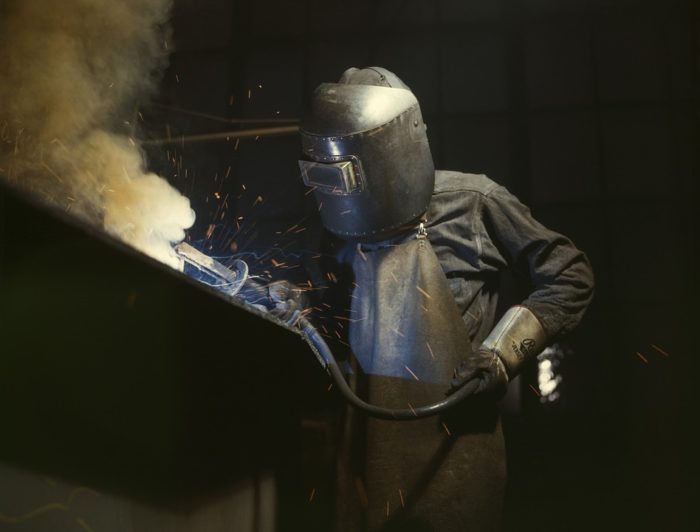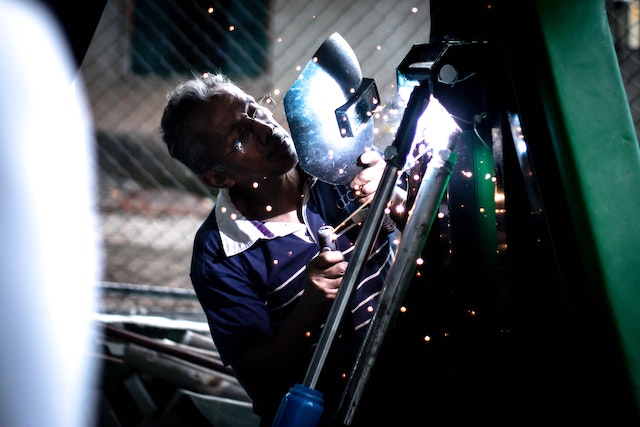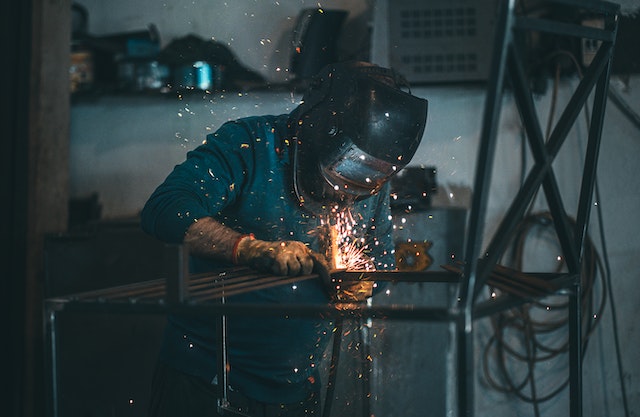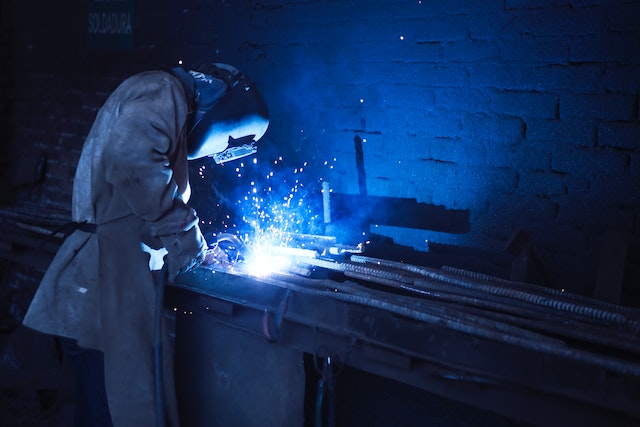Welding rods are also known as welding electrodes. These are useful in order to generate an electric current that is required in welding.
You may have heard that there are different types of welding rods and one of these is the E6011 electrode which is commonly used by most welders who focus more on deep penetrating welds.
If you want to know further details about the E6011 welding rod, you’re reading the right article. Without further ado, let us discuss what E6011 is, its uses, and its advantages over other types of electrodes.
What is E6011 Welding Rod?

The E6011 welding rod is a type of welding electrode which is also known as a stick electrode. This is also popular for being a “fast freeze” as it can be applied in any welding position, whether it be vertical, horizontal, flat, or overhead.
Furthermore, the E6011 welding rod has a flux coating that allows it to be used in both alternating current (AC) and direct current electrode positive (DCEP) power supplies.
What does the Name E6011 Stand For?
For welders to better understand, the American Welding Society (AWS) made a way for how welding rods can be easily classified. Hence, every letter and figure in an electrode’s name tells its attributes.
The letter “E” stands for the initial letter of the word “electrode” and the following two or three digits show the number of the weld metal’s minimum tensile strength measured in kilo-pounds per square inch (KSI).
The second to the last number indicates what welding position it can be applied to and the electrode’s welding characteristics or group. Finally, the last digit tells what types of current are used in the welding process.
Now that you’ve learned what each of the letters and figures stands for, let us take a look into the E6011 welding rod’s meaning.
In E6011, the “E” stands for electrode and the 60 means 60 KPI or 60,000 psi. The first number 1 denotes that the electrode can be applied in all welding positions as the weld eventually becomes solid and is suitable for overhead welding.
Lastly, the number “1” in the end signifies that it can work on either AC or both DC polarities since it possesses a high cellulose potassium flux coating.

Why is E6011 Considered a Cellulose Electrode?
You can tell that a certain welding rod is a cellulose electrode when its flux contains cellulose. Some welders add paper pulp or wood powder to decrease the cellulose of the electrode’s flux.
What is the Purpose of Cellulose in Electrodes?
Electrodes that have cellulose in their flux coating are more likely to allow a deeper weld penetration.
The cellulose of E6011 is converted into carbon monoxide, carbon dioxide, and hydrogen gas in the arc. This boosts the welded part’s tensile strength.
The higher the E6011’s cellulose potassium content, the higher the chance of conducting alternating current (AC).
Where can E6011 be Applied and Used?
Many welders prefer to use the E6011 electrode since it is a welding rod that can be used for any purpose. It is useful for fabrication, shipbuilding, and repair works such as repairs on engines, farm equipment, cars, and other things that usually have rust, dirt, and grease. It can also be best applied in welding immense diameter pipelines having a wall with less than 12.5 millimeters thickness.
Moreover, the E6011 welding rod is ideal for welding galvanized steels, certain low alloy steels, and mild steels. This welding rod’s coating creates a smooth spray-type arc that generates deep penetration and leaves a thin layer of easily cleaned-up slag.
In addition to that, the flux coating provided the E6011 welding rod with a highly stable arc as well as more deposition flexibility and efficiency, while producing less spatter.

The E6011 can work on both DC and AC power sources. Hence, it is suitable for small AC as well as DC types of welders.
Furthermore, it creates a powerful arc force and is able to quickly solidify weld metals, which makes the E6011 a welding rod applicable in all positions. It is then suitable for horizontal, vertical flat, or overhead positions.
E6011 Welding Rod Polarity
In the welding process, the welding rod should be matched with its polarity. The good thing is that E6011 works with any polarity. Therefore, you’ll be given the chance to choose which polarity to run, you can just adjust your setup depending on your preference but still use the E6011 welding rods.
E6011 Amperage Settings
The E6011 is no different compared to other electrodes as it also comes in a wide variety of diameter sizes. It ranges from 3/32″ to a quarter (¼) of an inch. This diameter size has something to do with the electrode’s amperage. The larger the diameter size, the higher the amperage it possesses.
Advantages of E6011 Welding Rod

Welders won’t like to use the E6011 welding rod for no reason. It has attributes that help welders make the welding process easier and produce high-quality welds. Below is the list of advantages of using the E6011 type of welding electrodes.
1. It works in direct and reverse polarity DC and AC power sources. Hence, you can easily switch from one current to another if this would create the best weld output.
2. It is useful to weld dirty, rusty, and contaminated materials.
3. Since it is a cellulose electrode, it generates 70% deeper penetration compared to other electrodes. This results in producing a much stronger bond between metals.
Important Note on Buying an E6011 Welding Rod
When purchasing a 6011 electrode for your welding plans, you must ensure that you buy it from a legitimate store. Welding electrodes must be certified or approved by international agencies to be able to create a strong weld. For instance, when you use a fake E6011 welding rod in shipbuilding, you are risking the lives of many passengers.
Conclusion
E6011 welding rods can be best used if you’re aiming for deep penetration in your welding process since this is perfect for heavy-duty welds.
It’s also important to match this kind of welding rod to an appropriate welder in order to produce a high-quality weld.
